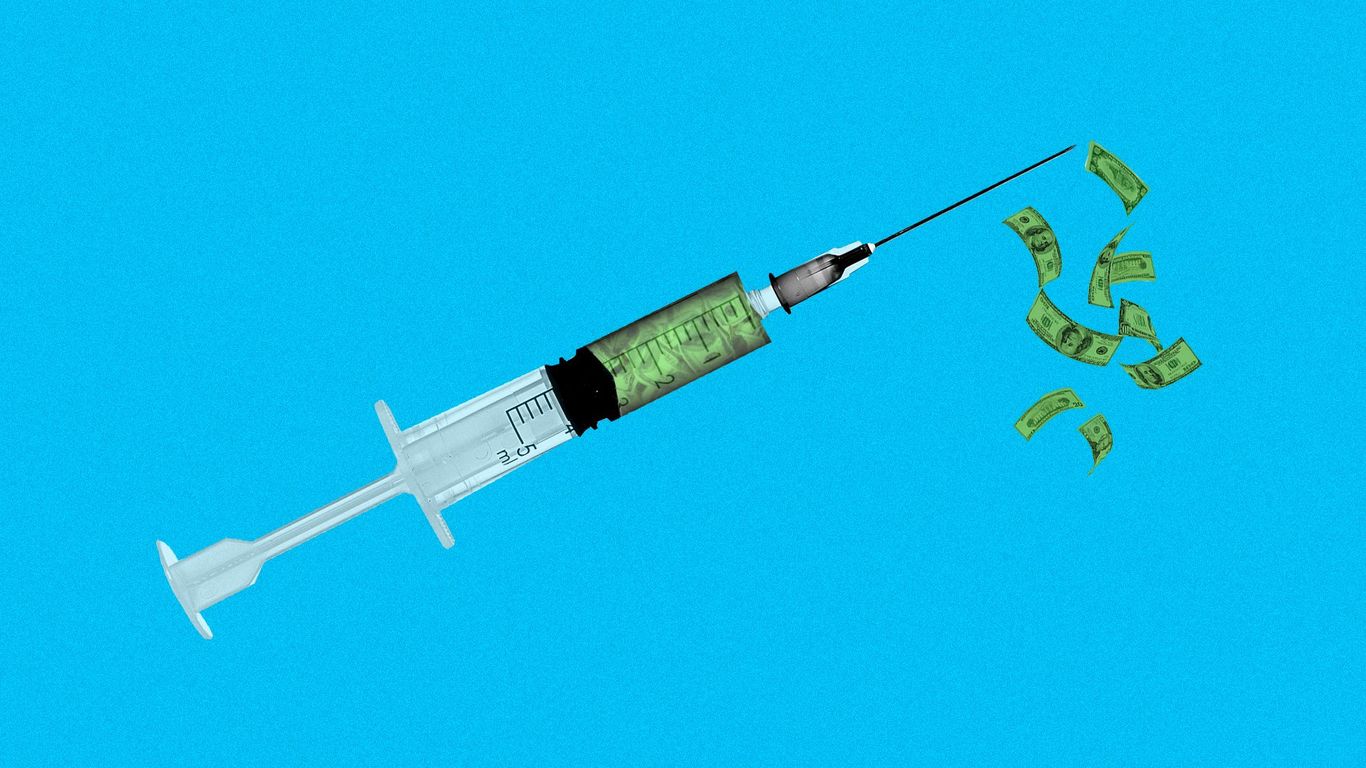
A flood of cash from Operation Warp Speed helped coax a slew of biotech companies into the race for a coronavirus vaccine, but the incentives to keep working on new competitors won't be nearly as strong.
Why it matters: That initial flood of cash worked — it delivered multiple, highly effective vaccines in record time. In other disease areas, though, second- and third-generation vaccines usually become the dominant products. And the first COVID-19 vaccines aren't necessarily a great fit for the whole world.
The big picture: Pfizer and Moderna's mRNA vaccines are extremely effective. And in the U.S. and other wealthy countries, their cold-storage requirements and multiple doses are easily manageable.
- "The incentive to try to develop a vaccine that will try and take the place of a vaccine like that is not overwhelming," NIAID Director Anthony Fauci said.
- The American government doesn't have much reason to pour more billions of dollars into subsequent research, and the vaccine market is highly dependent on governments and non-governmental organizations.
Yes, but: Each of the existing vaccines has some feature that makes it a less-than-perfect candidate for use in lower-income countries, and it's ultimately in rich countries' self-interest to vaccinate as much of the world as possible.
- Pfizer and Moderna are both two shots and require very cold storage. AstraZeneca is two shots and has been plagued by bad headlines and safety concerns from European regulators. Johnson & Johnson is one shot, but it's also suffering some reputational damage due to extremely rare side effects.
The intrigue: Especially because so much of the remaining need will be in poorer countries, the traditional market incentives to develop a cheaper competing product don't really apply here.
- “If you're trying to get another vaccine developed at a lower price, that’s probably not a good incentive” for drug companies, said Craig Garthwaite, a professor at Northwestern University.
"We now have performance standards ... for efficacy, safety, cost, ease of use, speed to develop new generation for coverage of variants, and scalability of manufacturing," said Krishna Udayakumar, founding director of the Duke Global Health Innovation Center. "New vaccines probably need to be better in one or more of those domains for longer term sustainability."
What we're watching: The vaccine pipeline isn't completely dry — Novavax is likely to seek authorization soon, and others are still in development.
- "Access to capital may become harder going forward. But there seem to be several vaccine candidates still getting significant R&D support," Udayakumar said. Those include vaccines that use different platforms, and some that could be administered orally.
- The existing vaccines makers also will keep working on their products: Pfizer is researching whether its vaccine can be stored at warmer temperatures, which would make it more accessible worldwide.
- “I think you're going to see an intense interest on the part of countries that are low and middle income in getting access to the mRNA vaccines, and I think you're going to see the companies putting a lot of research into eliminating the cold chain requirements they have," Fauci said.
The bottom line: "You will always have individual investigators working on new platform technologies," Fauci said. "They will be done not at an Operation Warp Speed level. They will be done by individual grantees that come up with a concept."
"come" - Google News
April 23, 2021 at 04:30PM
https://ift.tt/3sFlofb
The next generation of coronavirus vaccines won't come as quickly - Axios
"come" - Google News
https://ift.tt/2S8UtrZ
Shoes Man Tutorial
Pos News Update
Meme Update
Korean Entertainment News
Japan News Update
Bagikan Berita Ini















0 Response to "The next generation of coronavirus vaccines won't come as quickly - Axios"
Post a Comment